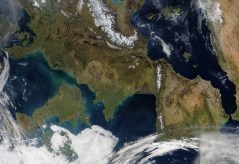Using Zoom.Earth to Track Real-Time Weather Patterns
In today’s fast-paced world, having access to real-time weather information is crucial. Whether you are a meteorologist, a pilot, or simply planning your outdoor activities, staying updated on weather patterns can help you make informed decisions. One powerful tool that has gained popularity in recent years is Zoom.Earth. In this article, we will explore how Zoom.Earth can be used to track real-time weather patterns and why it is a valuable resource for anyone seeking up-to-date weather information.
The Power of Satellite Imagery
One of the key features of Zoom.Earth is its ability to provide users with high-resolution satellite imagery. By accessing data from various weather satellites around the world, Zoom.Earth allows users to view the Earth’s surface in incredible detail. This satellite imagery not only provides stunning visuals but also enables users to monitor real-time weather conditions.
Zoom.Earth’s satellite imagery can be particularly useful when tracking severe weather events such as hurricanes or storms. Users can zoom in on specific regions and observe cloud formations, wind patterns, and other indicators of impending storms. This level of detail allows meteorologists and emergency response teams to make accurate predictions and take appropriate actions to ensure public safety.
Interactive Weather Layers
Another notable feature of Zoom.Earth is its interactive weather layers. These layers provide users with additional information about current weather conditions across the globe. By selecting the “Weather” option in the menu, users can overlay various data sets on the satellite imagery.
For example, users can choose to display temperature maps, precipitation levels, wind speeds, or even air quality indexes – all in real-time. This interactive feature allows individuals from different industries to customize their viewing experience based on their specific needs.
Historical Weather Data
In addition to providing real-time weather information, Zoom.Earth also offers access to historical weather data. This feature proves invaluable for researchers, climatologists, and anyone interested in studying past weather patterns.
By accessing the “Time Slider” tool on Zoom.Earth, users can go back in time and view satellite imagery from specific dates or periods. This capability enables scientists to analyze weather trends over time, identify climate change patterns, and make informed predictions about future weather conditions.
Planning Outdoor Activities
Aside from its professional applications, Zoom.Earth is also a great resource for individuals planning outdoor activities. Whether you are an avid hiker, a weekend cyclist, or simply someone who enjoys spending time outdoors, knowing the weather conditions in advance is crucial for a safe and enjoyable experience.
Zoom.Earth allows users to zoom in on their desired location and get a detailed view of the current weather. By utilizing the interactive weather layers mentioned earlier, individuals can plan their outdoor activities accordingly. For example, they can avoid areas experiencing heavy rainfall or strong winds and choose alternative routes or destinations instead.
In conclusion, Zoom.Earth is a powerful tool that provides users with real-time weather information through high-resolution satellite imagery. With its interactive weather layers and access to historical data, Zoom.Earth caters to various industries such as meteorology, research, emergency response teams while also being beneficial to individuals planning outdoor activities. By utilizing this resourceful platform, users can stay informed about current weather patterns worldwide and make well-informed decisions based on accurate data.
This text was generated using a large language model, and select text has been reviewed and moderated for purposes such as readability.






